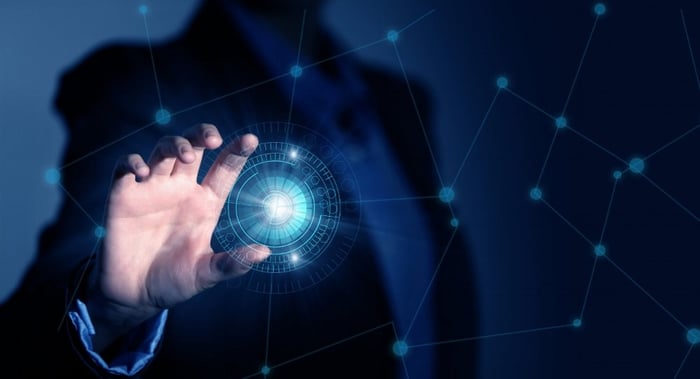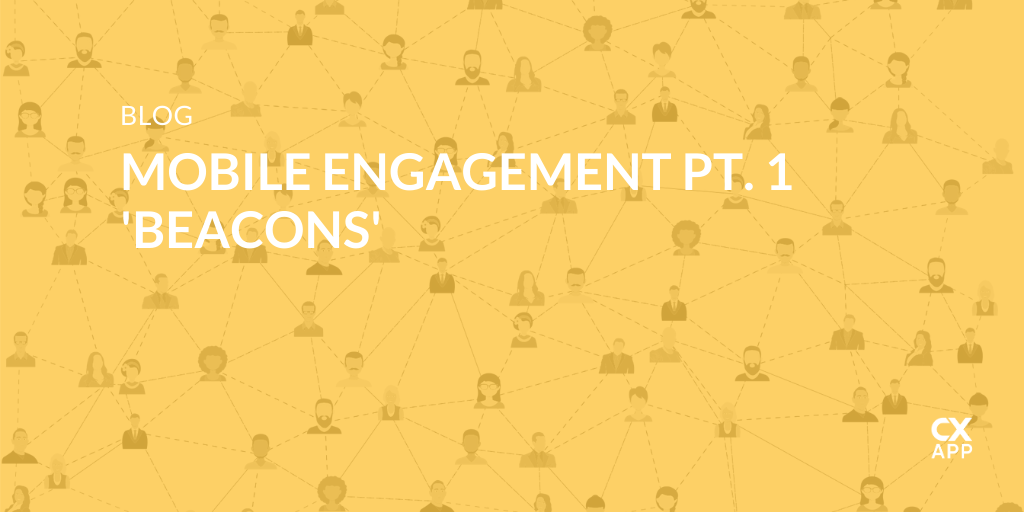The First Part of Our Mobile Engagement Campaign Series Explains Location Services
Today’s landscape is incredibly competitive and challenging for the average business. It is now more difficult than ever to succeed or make an impact with traditional advertising. This is because of the sheer amount of clutter and obstacles you need to power through, just to be heard. The noise is vast and suffocating.
To make matters worse, the attention span of the average consumer seems to decrease regularly—it currently sits lower than that of a goldfish.
This calls for doing something a little more flashy, a little more engaging, which can capture and hold the attention of your audience.
Experiential, mobile-first engagement helps bridge the digital and physical worlds. More importantly, it can be used to reel in your customers and bring engagement and exposure levels back to normal levels.
Why Experiential Matters?
More often than not, people go about their business with their head-down, either focused on the task at hand or distracted by their mobile devices.
Try this. Look up from your desk. Or go down to your lobby. For a moment, observe. You’ll see just how many people pass by with their faces tucked away, staring down at their smartphones or wearables. Those who aren’t busy interacting with their devices will likely be focused on what’s directly in front of them, as opposed to their entire surroundings. We’ll venture to guess that you will make eye contact with very few people if any. You see, people tend to get caught up in the moment, and that’s okay, it’s natural. But if you want to garner attention and engagement you absolutely have to find a way to steal their focus, at least initially, so you can convince them to stick around.
In a perfect world, people would encounter your advertising or marketing materials of their own accord, become inspired, and head right to your brand to make a purchase or to reach out. They might even share their experience on social, further exposing your brand to potential audiences. But we don’t live in a perfect world, do we?
That’s not how things work anymore either, at least not for the most part. You have to do something to capture the attention of audiences. If you want them to have their heads-up—as opposed to down—you need to interact with them, especially during live events. That’s exactly where the idea of experiential engagement comes into play.
What Does Experiential Engagement Entail?
Experiential engagement is robust, as there is no end-all, be-all way to launch a campaign. Due to the head-down distracted nature, most people exhibit, however, the idea is to do whatever it takes to grab their attention.
To that end, modern technologies such as machine learning, biometrics, artificial intelligence, and even robotic process automation are being used in place of traditional engagements, and it’s working too. Android devices pull over 40 billion queries for beacon-related content from Google services, annually.
For this series—of which there will be three parts—we’re going to explore a few integrated methods and opportunities for instilling experiential engagement tactics into your environments. If you truly want to be a part of the digital revolution, making an impact in the current landscape, then you’ll want to pay close attention to what’s explored here.
As a whole, it’s about providing unique, custom, and exclusive experiences for your customers that keep them engaged, interested, and loyal.
Proximity-Based Engagement Through Beaconing
For on-site and event-based setups, one of the best ways to garner engagement is to use modern beaconing, or location-based marketing—also referred to as proximity marketing. As you’d expect, there are many ways to go about it, but most of the elements of a beaconing campaign are aligned. They involve some form of local positioning, combined with engagement or data collection procedures.
A beacon is essentially a wireless access point or ping-tool used to transmit or receive data. Generally, they are battery-powered yet always-on and accessible. If you come within their proximity—say a range of 300 feet, for instance—they sync up with your smartphone or tablet to achieve something. That “something” is at the heart of the entire process. You could use them to collect data, transmit or share it, send alerts and notifications, contact your audience, and much more.
For example, let’s say you want to use a beacon to attract people that pass by your event booth. There are two scenarios that take place every time someone connects. For each user that taps into your local beacon—connecting via Bluetooth or Wi-Fi—the system records small amounts of data. With this, you may learn title, company, location etc. In return, the beacon transmits a custom experience to those users, such as an exclusive promotion or booth invite. You could send them a quick text that offers a free product for visiting your station.
The most common form of a beacon is called a BLE Beacon or Bluetooth Low-Energy Beacon, simply because it uses the Bluetooth wireless standard. Apple’s iBeacon is a popular platform.
Aruba—an HP enterprise—has the popular Meridian Wayfinding technology which offers a variety of indoor and location-based tracking tools. Even more interesting, perhaps, is their “BluDot” software that can handle turn-by-turn GPS directions and location services within the interior of a structure or property. Strategically placed Aruba beacons can direct customers and visitors around a property, as a sort of guided virtual tour.
The actual devices or beacons used to transmit data are manufactured by other providers, such as Aruba, Estimote, Gimbal, and Radius Networks. They can cost anywhere from $5 to $30—or higher—depending on the features and support you want.
According to ABI Research, Bluetooth beacons are expected to reach a 133% compound annual growth rate between 2016 and 2021. And that’s across the personal tracking, retail, advertising, and marketing sectors.

Addressing Customer Gaps with Beacons
Beacons are an incredibly lucrative and beneficial engagement tool, especially when it comes to local experiences and events. The reason for this being that most people are either visiting a new location or returning visitors want a unique experience each time they enter.
While visiting an event venue, for instance, customers may want to know the layout of the property in full detail. A mobile app that uses beacons can tell them exactly how the event is set up and where they need to be at a given time. A user could open the venue’s app and immediately see that a conference or keynote they need to attend is being held in a hall across the property. Or for meetings, they can easily navigate between conference rooms, cappuccino stations, and demo halls.
Most people—new or returning—are unaware of objects, places, and experiences that are available to them, even locally. Beacons can be used to orient and inform, but also to provide bursts of information in shorter bite-sized experiences. The latter is important because people are constantly on the move, distracted or not paying attention. A bite-sized local experience could be just what you need to reel them in, even if they are just passing by.
Beacons are so effective with audiences for one simple reason. The modern consumer prefers and desires contextual, relevant experiences that are tailored to their personal interests. It’s not enough to simply reach out or ping their device with alerts. You need to make sure you’re sending them data that’s relevant to them, their business lifestyle, and their needs.
Benefits of Beaconing In a Business Environment
It’s easy to see why beacons and location-based tools would be useful in an event or venue environment, but what about traditional business settings? Where would beacons fit in concerning your corporate headquarters or executive level meeting centers, for instance?
For starters, they can help keep everyone oriented. Chances are, someone is going to get lost or need help finding their way around the property, and that’s true whether they are new or returning. Beacons and location-tools can help provide the necessary assistance and wayfinding access that a professional needs to navigate.
You can also use this to your advantage to drive key players to various hotspots or important zones. Want to make sure someone stops at a particular booth or location while visiting your property? No problem, make use of your beacons! In this way, you can engage, interact, and drive people in the direction you want them to go.
You can even target specific users or audiences based on their current whereabouts. See someone spending a lot of time in one area or section of the property? You can bet it has to do with their personal interests or tastes, telling you a little something extra about that user.
Finally, you can use beaconing to deliver personalized offers, content, communications, or even interactions. All of it—every single action—is further augmented thanks to real-time tracking and communications. You can see where everyone is, what they are doing, how long and how much they invested, and even how engaged they were.
Combined with the right planning and analytics tools, your experiential engagement campaigns can be tracked, organized, and scoured for useful insights.
Beaconing In the Real World
To further drive the point home, let’s take a closer look at how a beacon may be used in the real world.
Avaya Stadium, used by the The San Jose Earthquakes, also employs a remarkably similar beaconing strategy to deliver contextual alerts and experiences to venue visitors.
At the Cleveland Caveliers stadium beacons are placed strategically around the venue. Using an exclusive Cavaliers-themed app, visitors can interact and engage through modern experiences like never before. They are delivered contextually-aware alerts and promotions during their visit. The app can do things like send guests information about where they are seated in the venue, deliver coupons and promotional offers, and even report concession wait times during a major event.
Facebook for Business rolled out support for BLE beacons, as well. This enables businesses to trigger alerts and send “Facebook Place Tips” direct to users’ smartphones when they come within proximity of the beacon.
It’s this kind of contextual, personalized experience that your users want. By 2020, over 50% of consumer mobile interactions will be contextualized, “hyperpersonal” experiences based on past behavior and current, real-time behavior. When that happens, you don’t want to be the only business that’s not providing such opportunities to your customers.
Naturally, the only way to succeed in today’s market is through modern experiential engagement techniques such as beacons or proximity-based tools that offer contextual experiences.
Stay tuned for part two where we take a closer look at another innovative form of experiential engagement: Augmented Reality.


